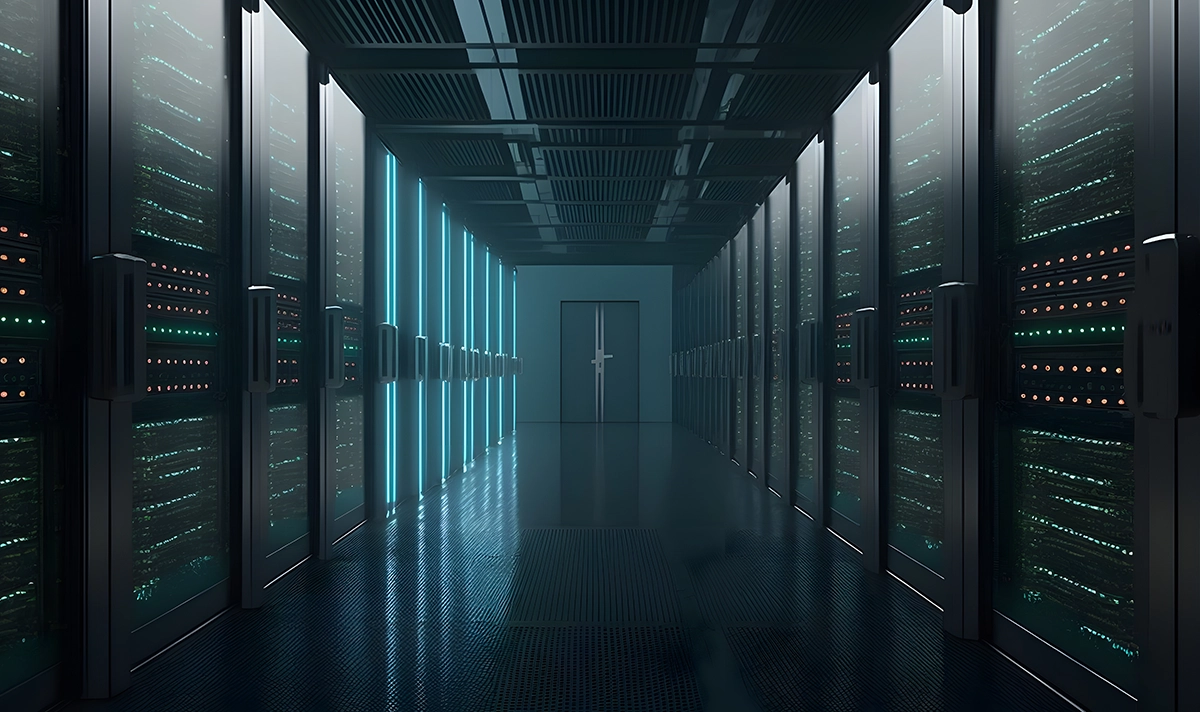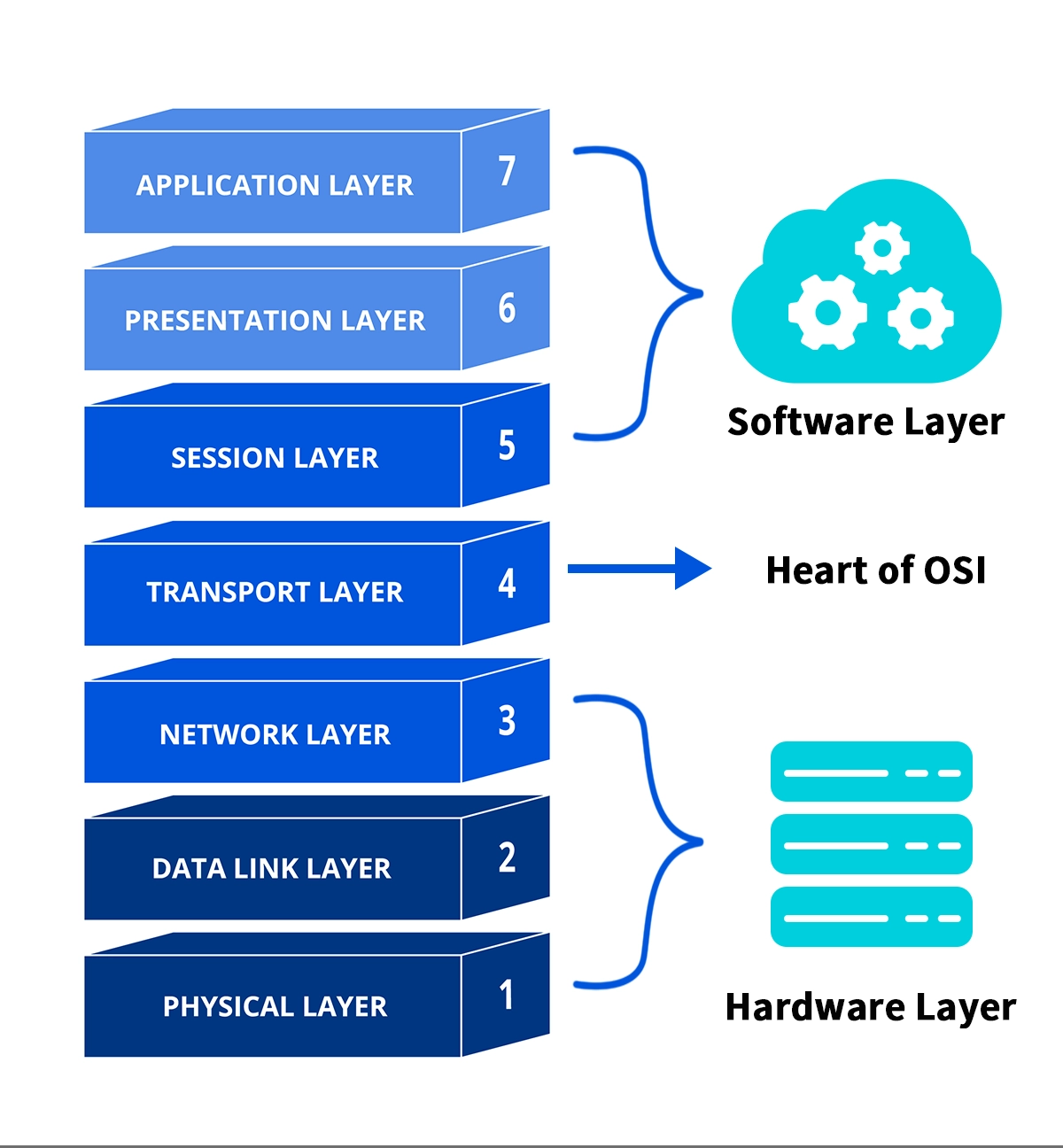
Ever wondered how an email seamlessly travels from your computer in New York to a colleague's laptop in Tokyo? Or how a video stream from a server miles away plays flawlessly on your phone? The magic behind this reliable communication is a structured, layered framework known as the Open Systems Interconnection (OSI) model.
For network engineers, IT professionals, and tech enthusiasts, understanding the OSI reference model is not just academic—it's fundamental. It's the universal language we use to troubleshoot complex network issues, design robust systems, and ensure interoperability between devices from different vendors. In this deep dive, we'll unravel the seven layers of the OSI model, explore their functions, and connect the dots to real-world hardware, including the vital role of optical transceivers.
📝 What is the OSI Model? A Conceptual Foundation
Developed by the International Organization for Standardization (ISO) in the 1980s, the OSI model is a conceptual framework that standardizes the functions of a telecommunication or computing system into seven distinct layers. Each layer has a specific role and serves the layer above it, while receiving services from the layer below.
Think of it like sending a physical letter:
You write the content (Application Layer).
You put it in an envelope with a specific address format (Presentation & Session Layers).
The post office determines the best route (Transport & Network Layers).
The mail truck physically carries it to the destination (Data Link & Physical Layers).
This layered approach simplifies network protocol design and makes it easier to isolate and fix problems. Whether you're diagnosing slow network speeds or planning a new data center, a solid grasp of the OSI model layers is your most powerful tool.
📝 The 7 Layers of the OSI Model: A Detailed Walkthrough
Let's break down each layer, from the top where users interact, down to the physical wires and light pulses that carry the data.
Layer 7: Application Layer
This is the layer that users directly interact with. It provides protocols for services like web browsing (HTTP), email (SMTP), and file transfers (FTP). Its primary function is to provide network services to user applications.
🔍 Key Protocols: HTTP, HTTPS, FTP, SMTP, DNS.
Layer 6: Presentation Layer
Think of this as the translator. It ensures that data sent from the Application Layer of one system is readable by the Application Layer of another. It handles tasks like data encryption, decryption, and compression.
🔍 Key Functions: SSL/TLS encryption, data compression (e.g., GIF, JPEG).
Layer 5: Session Layer
This layer is responsible for establishing, managing, and terminating communication sessions between applications. It controls the dialogues (sessions) between computers.
🔍 Key Functions: Authentication, reconnection control.
Layer 4: Transport Layer
This is a critical layer for end-to-end connection control. It ensures complete data transfer. Layer 4 segments data from the Session Layer and reassembles it on the receiving end. It also handles error recovery and flow control.
🔍 Key Protocols: TCP (Transmission Control Protocol - reliable, connection-oriented) and UDP (User Datagram Protocol - fast, connectionless).
Layer 3: Network Layer
The "routing" layer. Its main job is to manage logical addressing and path determination—finding the best way to get data from the source to the destination across multiple networks (internetworks). This is where IP addresses live.
🔍 Key Protocols: IP (IPv4, IPv6), ICMP, Routers operate here.
Layer 2: Data Link Layer
This layer is responsible for node-to-node data transfer and error detection on the physical medium. It takes packets from the Network Layer and encapsulates them into frames. It also handles Physical Addressing (MAC Addresses).
🔍 Key Devices: Switches, Bridges. Protocols: Ethernet, PPP.
Layer 1: Physical Layer
This is the foundation—the hardware. It defines the electrical, mechanical, procedural, and functional specifications for activating, maintaining, and deactivating the physical link between devices. This includes cables, connectors, and the fundamental data transmission media.
🔍 Key Elements: Cables (Copper, Fiber), Connectors, Hubs, and Optical Transceivers.

For a quick overview, here is a summary table of the OSI model layers:
OSI Layer | Layer Number | Function | Key Protocols & Devices |
|---|---|---|---|
Application | 7 | User Interface, Network Services | HTTP, FTP, SMTP |
Presentation | 6 | Data Translation, Encryption | SSL/TLS, JPEG, MPEG |
Session | 5 | Manages Dialogues/Sessions | NetBIOS, RPC |
Transport | 4 | End-to-End Connections, Reliability | TCP, UDP |
Network | 3 | Logical Addressing, Routing | IP, ICMP, Routers |
Data Link | 2 | Physical Addressing, Error Detection | Ethernet, MAC, Switches |
Physical | 1 | Raw Bit Stream Transmission | Cables, Hubs, Optical Modules |
📝 The Unsung Heroes in Physical Layer & The Gateways of Data
When we talk about high-speed data center interconnects (DCI) and modern networking infrastructure, the conversation inevitably leads to the components that make physical connectivity possible. Operating squarely at Layer 1, these interfaces are the literal gateways for all data entering and leaving a device. Two of the most ubiquitous yet critical components are the RJ45 jack and the optical transceiver.
The RJ45 Magjack: The Cornerstone of Copper Connectivity
If you've ever plugged an Ethernet cable into a computer, switch, or router, you've connected to an RJ45 magjack. This humble, modular connector is the standard interface for copper-based twisted-pair Ethernet networks. Its role at the Physical Layer is fundamental:
Electrical Interface: It provides the physical electrical connection for the differential signals used in Ethernet standards.
Mechanical Connection: It securely houses the 8 pins of the Ethernet cable, ensuring a stable and reliable connection.
Integration with Magnetics: Most RJ45 connectors incorporate integrated magnetics (or are used in conjunction with a separate ethernet transformer module). These magnetics are crucial for electrical isolation, signal integrity, and protecting the sensitive electronics on the board from voltage surges and common-mode noise.
From Gigabit Ethernet (1000BASE-T) in offices to the latest high-speed Ethernet switch designs supporting 2.5GBASE-T, 5GBASE-T, and even 10GBASE-T over structured cabling, the RJ45 jack remains the workhorse for copper connectivity, enabling Power over Ethernet (PoE) and forming the backbone of countless Local Area Networks (LANs).
Optical Transceivers: The Engines of Light-Based Data Transmission
While RJ45 handles electrical signals over copper, optical transceivers are the engines for light-based data transmission over fiber optic cables. These small but mighty devices are responsible for converting electrical signals from network devices into optical light signals, and vice-versa.
The performance of your entire network can hinge on the quality and compatibility of these modules. They determine critical factors like:
Data Rate: From 1G to 400G and beyond.
Transmission Distance: Short-range within a rack, or long-haul over kilometers.
Wavelength: Determining the capacity and efficiency of the data stream.
When selecting optical modules for high-speed switching and routing, compatibility and reliability are non-negotiable. This is where choosing a trusted manufacturer becomes paramount. For instance, LINK-PP's series of high-performance transceivers are engineered to meet rigorous data center connectivity requirements, ensuring seamless integration and optimal performance. A popular choice for many of our 25G deployments is the LINK-PP SFP28-25G-SR module, which offers a perfect balance of speed, cost-effectiveness, and reliability for short-reach applications.
Integrating high-quality components like the LINK-PP SFP-25G-SR ensures that the very foundation of your OSI model—the Physical Layer—is robust, minimizing latency and packet loss, which are critical for optimizing network performance.
📝 Why the OSI Model Still Matters Today
In an era dominated by the simpler TCP/IP model, one might question the relevance of the OSI model. However, its value is enduring:
Troubleshooting: It provides a systematic methodology to pinpoint where a fault lies. Is it an application error (Layer 7) or a faulty cable (Layer 1)?
Standardization: It creates a common ground for vendors to develop interoperable products.
Education: It remains the best tool for teaching the fundamental concepts of network communication protocols.
Understanding the interplay between layers, such as how a Transport Layer protocol like TCP ensures data integrity for an Application Layer protocol like HTTP, is key to mastering network architecture.
📝 Conclusion: Building on a Solid Foundation
The OSI model is more than a decades-old concept; it's the intellectual scaffolding that supports our interconnected world. From the application you use to the light pulses in a fiber strand, each layer plays a critical role. By mastering this model, you empower yourself to design, manage, and troubleshoot networks with confidence and precision.
As you build or upgrade your network infrastructure, remember that every layer counts. Ensuring you have reliable hardware at the Physical Layer, such as certified optical modules, or RJ45 Connector is the first step toward achieving a high-performance, resilient network.
Ready to ensure your network's Physical Layer is built with reliability and performance in mind?
Explore LINK-PP's comprehensive portfolio of compatible optical transceivers, including the LINK-PP SFP28-25G-SR and our advanced 100G/400G solutions, designed to meet the demands of modern high-speed data transmission.
➡️ Visit our website [link-pp.com] to find the perfect connectivity solution for your needs!
📝 FAQ
What is the OSI model?
The OSI model helps you see how computers share data. It splits communication into seven layers. Each layer does a different job. You can watch how data moves between devices.
What does each OSI layer do?
Each layer takes care of part of the data.
Physical: Sends bits
Data Link: Makes frames
Network: Sends packets
Transport: Checks delivery
Session: Handles sessions
Presentation: Changes data
Application: Helps users
What protocols work at each OSI layer?
You use special protocols at every layer.
Application: HTTP, FTP, SMTP
Transport: TCP, UDP
Network: IP
Data Link: Ethernet
Physical: USB, Bluetooth
What problems can the OSI model help you solve?
The OSI model helps you find network problems. You can check each layer to see where data stops. This lets you fix issues quickly. You can also build better networks by knowing each layer’s job.
What is the difference between OSI and TCP/IP models?
The OSI model helps you learn about network layers. It has seven layers. The TCP/IP model has four layers. The OSI model is for learning. The TCP/IP model works in real networks like the internet.


